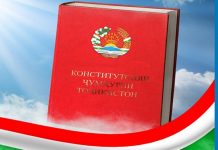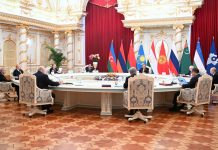The Tajik peace experience stands as a rare and exemplary model of conflict resolution and socio-political coexistence in the post-Soviet era. Following independence in 1991, Tajikistan faced profound challenges in defining its political and social direction, which were exacerbated by the emergence of deep ideological and political divisions that led to a devastating civil war. The process of overcoming these divisions and building lasting peace offers valuable lessons for conflict resolution globally.
1. Historical Context and Emergence of Conflict
In the early 1990s, Tajikistan witnessed the rise of two major political forces:
• Secular Intellectual and Political Groups: These groups, including state elites, sought to preserve the existing structures or transition to a secular, democratic framework, emphasizing national and cultural values.
• Islamic Clergy and Reformers: Represented by the Islamic Renaissance Party and allied movements, this group advocated for religious and moral reform, with some elements envisioning an Islamic state as an alternative political model.The ideological clash between these forces, compounded by the destabilizing influence of regional factors such as the Afghan war and the spread of political Islam, led to a breakdown of law and order. The situation culminated in a violent civil war, marked by political instability, the collapse of central governance, and significant human and economic losses.
2. The Role of Leadership and the Road to Peace
Amidst the chaos, the emergence of Emomali Rahmon as a unifying figure was pivotal. Elected Chairman of the Supreme Council in 1992, Rahmon embodied four critical leadership qualities that laid the foundation for peace:
1. Courage and Responsibility: He publicly committed to restoring peace and stability.
2. Vision for a Democratic State: Rahmon promoted the creation of a secular, law-based democratic state as the future framework for Tajikistan.
3. Building Trust Across Regions: He worked to gain the confidence of diverse regional and political groups.
4. International Recognition: His leadership was acknowledged by international organizations, fostering external support for peace efforts.Rahmon’s initiatives included the adoption of the 1994 Constitution and the establishment of the People’s Democratic Party of Tajikistan. These steps created a legal and ideological framework for peace, balancing state interests against extremist and conservative forces.
3. The Stages of the Peace Process
The Tajik peace process unfolded in three distinct stages:
Stage 1: 1992–1997 – Negotiations and Conflict Resolution
Key developments during this stage included:
• The establishment of a Constitutional Commission to draft a new legal framework.
• Efforts to restore constitutional order, culminating in presidential elections.
• Initiation of inter-Tajik peace negotiations, resulting in the signing of the General Agreement on the Establishment of Peace and National Harmony on June 27, 1997. This agreement, a landmark in conflict resolution, ended the civil war and laid the groundwork for national reconciliation.
Stage 2: 1997–2000 – National Reconciliation
This period focused on implementing the peace agreement:
• The formation of a National Reconciliation Commission, which facilitated the integration of opposition representatives into government, allocating 30% of posts to them.
• The return of refugees and reconstruction of damaged infrastructure.
• Restoration of peace and stability, enabling citizens to resume normal life and rebuild trust in state institutions.
Stage 3: 2001–Present – Sustained Development
Since 2001, Tajikistan has entered a phase of sustainable development characterized by:
• The establishment of a professional parliament and a division of powers among legislative, executive, and judicial branches.
• Economic growth, with GDP increasing at an average annual rate of over 8%.
• Strengthening national unity and maintaining political stability for over three decades.
4. Lessons from the Tajik Peace Experience
The success of the Tajik peace process lies in its balanced approach, which rejected both extremism and authoritarianism, instead prioritizing dialogue, compromise, and inclusivity. The General Agreement on the Establishment of Peace and National Harmony remains a rare example of warring factions achieving a negotiated settlement in a deeply divided society.
5. Global Relevance
Tajikistan’s experience offers a valuable framework for resolving intrastate conflicts. By fostering dialogue, empowering creative leadership, and integrating opposing factions into the political process, Tajikistan avoided prolonged conflict and preserved its sovereignty. Its people’s resilience and commitment to unity serve as a powerful reminder of the potential for reconciliation in even the most challenging circumstances.
Today, Tajikistan stands as a symbol of peace, stability, and progress in a region historically plagued by unrest. The country’s achievements, built on the sacrifices of its people during the civil war, underscore the importance of collective responsibility in combating extremism and securing a stable future.
Faizullo Barotzoda, associate Professor of theDepartment of Foreign Regional Studies,Faculty of International Relations




